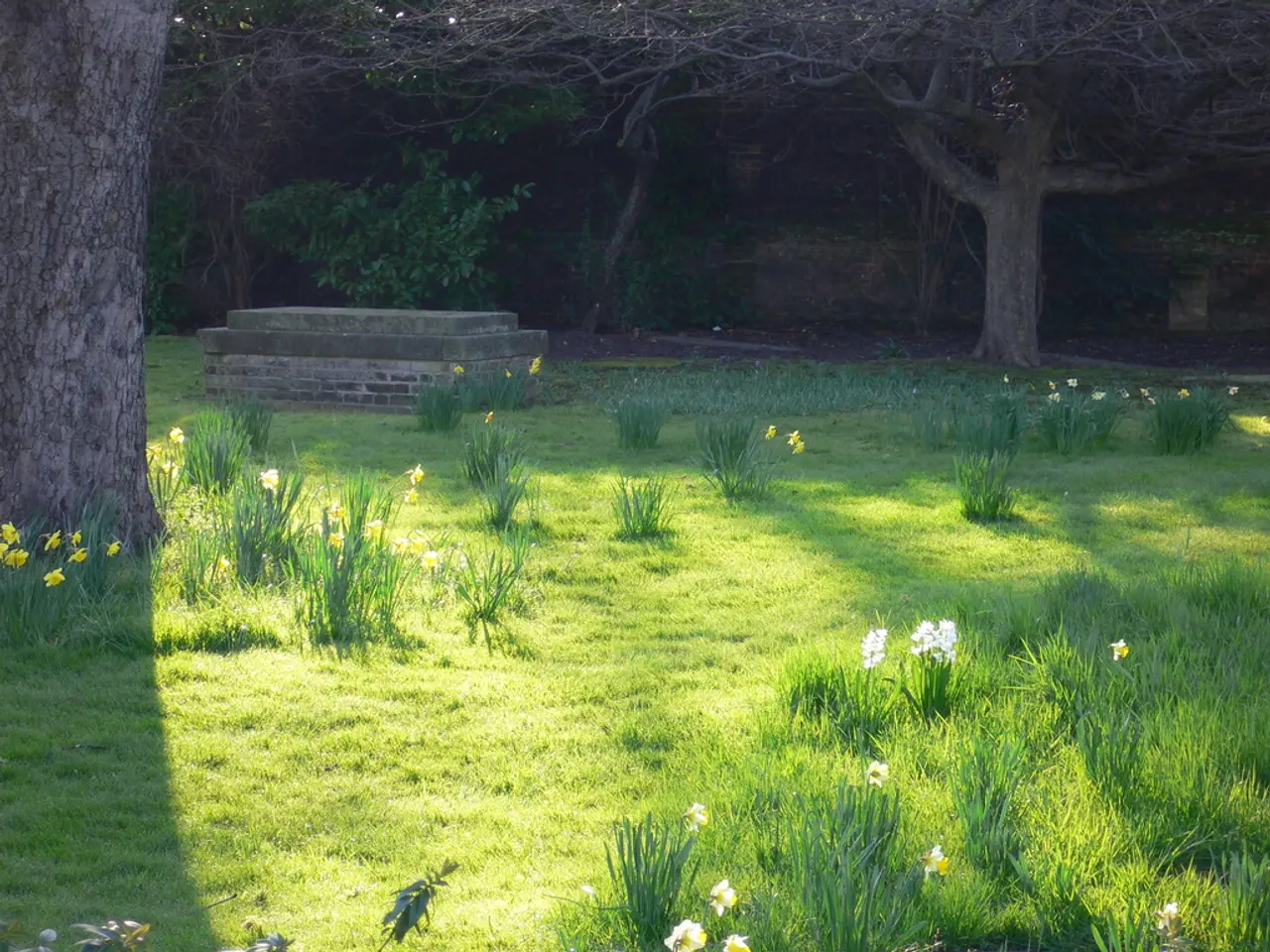Buckingham Palace Grounds Explored
Nestled within the heart of London, Buckingham Palace has been the residence of the British monarchy since 1837. But did you know that it also boasts a hidden paradise in its gardens?
This year, the gardens have undergone a transformation with the addition of 31 new plant varieties to the herbaceous border. These include Echinops, Echinacea, Phlomis, Aster, and Sweet peas, all chosen to attract pollinators and create a vibrant, ever-evolving display.
The herbaceous border, a spectacular 156 meters long and 16 feet deep, is designed to be at its most vibrant in summer. With a rich variety of plants, it offers a broad palette of colors and textures, and every step reveals something new. The height arrangement of the plants gives the illusion of a slope, although the border is actually flat.
The border is dynamic, evolving with seasonal changes and annual additions. In 2025, for example, 31 new plant varieties were introduced, many chosen specifically to attract pollinators. A unique highlight is the presence of exotic banana plants, which survive the London city climate with winter protection from straw.
The garden practices sustainability, being peat-free for many years and running a recycling center that composts 99% of green waste from the Royal gardens.
Moving on to the rose garden, it is arranged into 25 beds, each planted with 60 rose bushes of a distinct variety. No two adjoining beds share similar colors, making for a varied and harmonious visual effect. The garden also houses an impressive white Carrara marble vase, the Waterloo Vase, weighing an estimated 19 tonnes and standing 5.5 meters tall, originally commissioned by Napoleon and gifted to the future George IV.
The rose garden is part of the larger grounds that include over 1,000 trees—such as 98 mature London plane trees, 85 species of oak, and 40 types of mulberry. Additionally, the lake within the gardens has an island hosting five beehives producing roughly 160 jars of honey annually used in the royal kitchens. These features contribute to the gardens’ rich biodiversity alongside wildflower meadows with over 320 species.
In conclusion, the gardens of Buckingham Palace are a testament to horticultural beauty, historic significance, and environmental sustainability. From the vibrant herbaceous border to the harmonious rose garden, these private grounds offer a unique and captivating experience.
[1] Buckingham Palace Gardens: A Hidden Paradise in the Heart of London. (2021). The Telegraph. Retrieved from https://www.telegraph.co.uk/gardening/features/buckingham-palace-gardens-hidden-paradise-heart-london/
[2] Buckingham Palace Gardens: A Floral Feast for the Eyes. (2022). The Guardian. Retrieved from https://www.theguardian.com/uk-news/2022/may/20/buckingham-palace-gardens-a-floral-feast-for-the-eyes
[3] Buckingham Palace Gardens: Sustainable Practices and Biodiversity. (2020). The Royal Horticultural Society. Retrieved from https://www.rhs.org.uk/advice/profile?id=1002469
[4] Buckingham Palace Gardens: A Tour with Alan Titchmarsh. (2021). BBC. Retrieved from https://www.bbc.co.uk/programmes/m000w5zj
[5] Buckingham Palace Gardens: A Newsletter Sign-Up for Exclusive Content. (2022). Royal Household. Retrieved from https://www.royal.uk/news/buckingham-palace-gardens-newsletter-sign-up-exclusive-content
- The Buckingham Palace Gardens, a hidden paradise in the heart of London, has been transformed this year with the addition of 31 new plant varieties to the herbaceous border, including Echinops, Echinacea, Phlomis, Aster, and Sweet peas, all chosen to attract pollinators and create a vibrant, ever-evolving display.
- Not only a testament to horticultural beauty and historic significance, the Buckingham Palace Gardens also practice sustainability, being peat-free for many years and running a recycling center that composts 99% of green waste from the Royal gardens.
- The rose garden within the Buckingham Palace Gardens, arranged into 25 beds and each planted with 60 rose bushes of a distinct variety, is part of the larger grounds that include over 1,000 trees, an island hosting five beehives producing approximately 160 jars of honey annually, and wildflower meadows with over 320 species, contributing to the gardens’ rich biodiversity.




